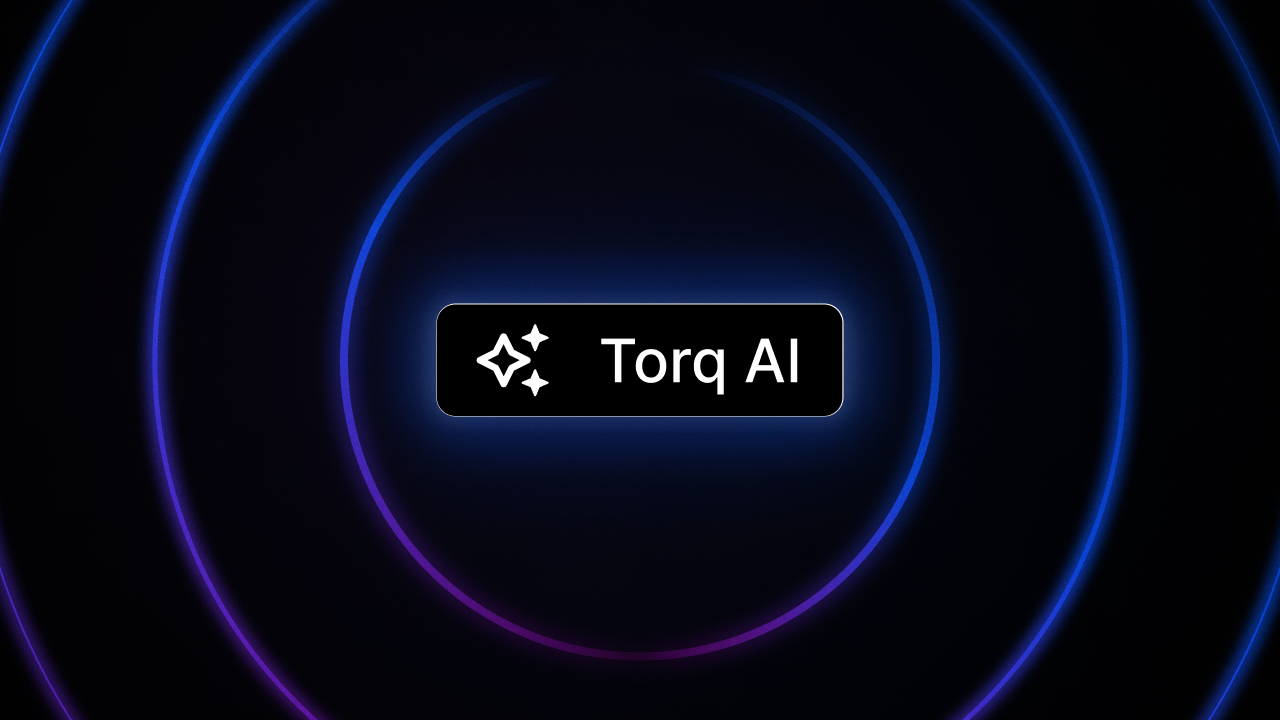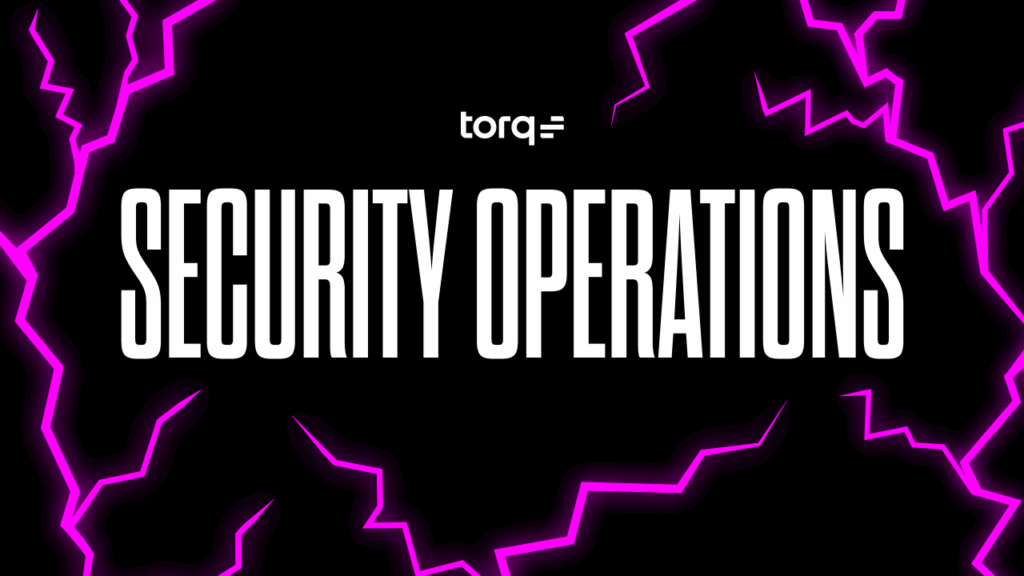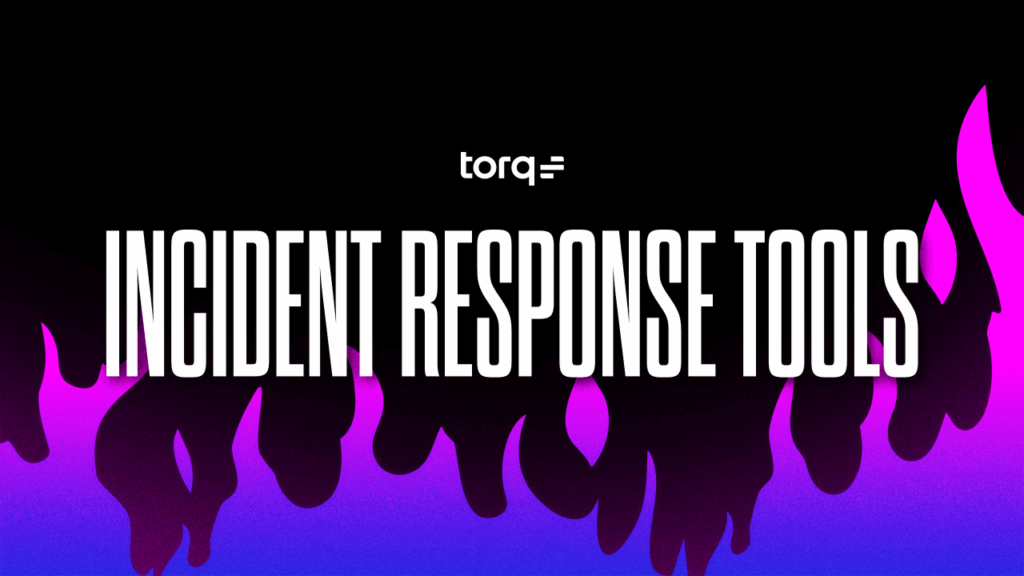Contents
Get a Personalized Demo
See how Torq harnesses AI in your SOC to detect, prioritize, and respond to threats faster.
Security Operations Centers (SOCs) are the command center of an organization’s frontline cybersecurity defenses — responsible for monitoring threats, prioritizing alerts, and orchestrating remediation. However, today’s SOCs are facing an existential crisis: an overwhelming volume of increasingly complex and sophisticated threats combined with a shortage of skilled analysts. This perfect storm is pushing SOCs to their breaking point, burning out their teams and leaving their organizations vulnerable.
Legacy security automation solutions struggled to keep up with the evolving threat landscape, especially at scale. The rise of artificial intelligence (AI) has been hailed as a game-changer for SOCs, offering the potential for unprecedented efficiency gains.
But what does effective use of AI in the SOC look like? Below, we show top use cases for leveraging AI in the SOC and explore how AI is transforming security operations.
What is an AI SOC?
An AI-powered SOC is a security operations center that leverages artificial intelligence to automate processes, enhance threat detection, accelerate incident response, provide contextual insights, and optimize resource allocation — resulting in greater efficiency and accuracy, improved decision-making, faster time to remediation, and a more proactive security posture.
The Technical Foundations of an AI-Powered SOC
Security automation has evolved way past SOAR — with Hyperautomation and AI Agents forming the new cornerstones of the modern autonomous SOC.
- AI-driven Hyperautomation: By seamlessly integrating your security stack and instantly automating any security process using thousands of pre-built integration steps and AI-generated workflows, Hyperautomation offloads routine tasks, reduces analyst burnout, and accelerates threat response.
- Multi-Agent System: Specialized AI Agents automate incident response by interpreting natural language instructions and collaborating to autonomously execute tasks such as alert triage, containment, and remediation actions. Human analysts can interface with the AI agents using natural language for accelerated enrichment, investigation, and recommended next steps.
What’s the Difference? All the AI in the SOC, Explained
This new landscape of AI in the SOC comes with a LOT of similar-but-different terminology. GenAI, AI Agents, OmniAgents, agentic AI, multi-agent systems — we get it, it can be confusing.
Here’s a breakdown of all the AI powering modern security operations, what each one does, and how Torq HyperSOC™ puts them all to work.
| Term | Definition | What It Does | How Torq HyperSOC™ Uses It |
|---|---|---|---|
| GenAI | GenAI creates content, code, text, images, or predictions in response to natural language prompts | Enhances SOC operations with automated case summaries, enrichment, and workflow generation | Drafts incident summaries, generates workflow templates, and speeds up case documentation |
| Agentic AI | Agentic AI is autonomous, goal-driven AI that plans, adapts, and executes multi-step security workflows across time and tools | Powers AI agents with autonomy and adaptability to handle tasks like detection, triage, and response in real-time | Socrates, the AI SOC Analyst, coordinates and makes workflow decisions autonomously without human-triggered actions |
| AI Agent | An AI Agent is a single AI entity that independently handles a specialized task | Performs specific security tasks such as isolating endpoints, locking accounts, or enriching threat intelligence based on predefined triggers | Powers single-task automations: pulling threat intel, scanning suspicious emails, updating ServiceNow or Jira tickets |
| Multi-Agent System (MAS) | A Multi-Agent System is composed of multiple autonomous AI agents that collaborate to achieve complex goals | Deploys specialized AI agents in parallel across the SOC to handle triage, investigation, containment, and case management | MAS architecture: Runbook Agent, Investigation Agent, Remediation Agent, and Case Management Agent, all coordinated by Socrates |
| OmniAgent | An OmniAgent acts as a “Super Agent” orchestrating the activities and interactions between specialized AI Agents in a MAS | Uses sophisticated iterative planning and reasoning to solve complex, multi-step problems autonomously through the coordination of multiple AI Agents | Socrates identifies prioritizes, and remediates threats across the entire organization by controlling and coordinating the Runbook, Investigation, Remediation, and Case Management Agents |
Top Use Cases for AI in the SOC
By analyzing vast amounts of data from across your security stack and executing intelligent automations, AI unlocks efficiency gains across SOC functionalities such as:
- Incident investigation: Analyze massive volumes of alerts to identify patterns, suppress low-fidelity alerts, and automate triage and validation, accelerating the investigation process from start to resolution.
- Case management: Streamline the process of prioritizing, tracking, and managing security incidents by intelligently enriching and automating cases.
- Workflow generation: Prompt AI with a natural language description of your use case to instantly build security automation workflows — no code required.
- Case summarization: Analyze all relevant data points associated with a security alert to provide easy-to-digest, evidence-backed summaries of complex security cases, improving SOC analysts’ efficiency and collaboration.
- Documentation: Automatically generate documentation for complex automated processes, increasing both efficiency and accuracy from shift-handovers to compliance audits.
- Executive reporting: Prompt the system to generate case info in the right tone and level of information for a specific persona, such as for a non-technical executive or board member.
- Team collaboration: Automatically alert Slack or Teams channels when a case is created, escalated, resolved and more.
- Resource optimization: Use AI to assign cases to an available analyst based on workload and shift schedules.
- Data correlation: Combine and correlate data from all of the tools in your security stack, providing a holistic view of your security environment.
- Threat response: Automate tasks like threat detection and containment for faster incident resolution.
How Do AI-Powered SOCs Transform Traditional Security Operations?
Scaling SOC operations: AI agents can handle an influx of security events: triaging, investigating, and remediating the majority of Tier-1 and Tier-2 alerts. This frees up analyst bandwidth to focus on urgent incidents and strategic projects, enabling SOCs to efficiently scale their operations without increasing headcount (which is vital amidst today’s shortage of skilled cybersecurity talent).
Shifting to a proactive security posture: Agentic AI goes beyond just detecting and counteracting attacks by applying real-time intelligence to identify patterns and detect emerging threats. This allows SOCs to adopt a less reactive, more preemptive approach to address vulnerabilities before they can be exploited or breached.
Reducing alert fatigue and analyst burnout: By autonomously triaging alerts and reducing false positives, AI agents reduce the number of irrelevant alerts that analysts must wade through. And, by automating tedious, repetitive tasks and auto-remediating most low-level alerts, AI-driven Hyperautomation helps senior analysts gain back the time and capacity to focus on more rewarding work like strategic projects.
Speeding up MTTR: All of the efficiency gains from leveraging AI in the SOC translates to more alerts resolved, faster.
Will AI Replace Humans in the SOC?
Adopting AI in the SOC is not about replacing human SOC analysts — it’s about augmenting and empowering them. With a looming 4 million+ cybersecurity talent shortage, organizations must not only retain their existing analysts, but also help them work more efficiently. On top of that, organizations are recognizing that human-only defenses are inadequate to counter the evasive and persistent threats posed by AI-driven attacks.
AI reduces analyst burnout: A multi-agent system can reduce the strain on SOC teams by offloading rote tasks, auto-remediating the majority of Tier 1 tickets, and upleveling the skills of junior analysts. This frees up senior analysts to focus their expertise on critical threats and strategic projects, helping their organization achieve a stronger overall security posture.
Human expertise must remain the final line of defense: Done the right way, AI-powered SOCs keep humans “in the loop” as the ultimate decision-makers for high-stakes threats following rigorous, multi-tiered AI evaluation and case enrichment that helps human analysts take informed, decisive action.
“By 2028, multiagent AI in threat detection and incident response will rise from 5% to 70% of AI implementations to primarily augment — not replace — staff..”
Source: Gartner Inc.
How Torq’s AI Capabilities Supercharge SecOps
Torq has been very deliberate in how we’ve extended the capabilities of the Torq platform using AI to solve real problems for SOCs with products and features like:
- Socrates, the OmniAgent AI SOC Analyst: Socrates intelligently automates alert triage, incident investigation, and response, extending your SOC teams’ capabilities and improving response times across the board. Socrates coordinates a full Multi-Agent System (MAS) — planning, investigating, remediating, and managing security cases with human-like decision-making and machine-speed execution.
Socrates can auto-remediate 95% of cases within minutes. For critical cases that require human intervention, your analysts can collaborate with Socrates using natural language to summarize case details, enrich cases with additional investigation and threat intelligence, and trigger remediation workflows - AI Workflow Builder: Simply describe your desired security automation workflow in natural language, and Torq’s AI Workflow Builder will generate a tailored solution in seconds. Rather than spending hours manually building workflows from scratch, your team is freed up to focus on more strategic security initiatives.
- AI Case Summaries: Help your team make the right decisions quickly by presenting them with a concise, insightful, and verifiable AI-generated summary of each case. No more wading through pages of logs and incident details! The easy-to-read summaries empower SOC teams to work faster, make informed decisions with confidence, and seamlessly transition between shifts by giving the incoming team clear case context backed by citations.
- AI Data Transformation: Simplify complex data manipulation for security operations by easily transforming complex JSON data using natural language — no coding required. Each transformation is broken down into precise, testable micro-transformations that users can edit, validate, and modify individually.
- Runbook Execution: Intelligently plan customized investigation and response strategies based on the organization’s historical outcomes and adapt to new threat vectors, ensuring faster containment.
- Deep Research Investigations: Uncover hidden attack patterns across disparate data sources, perform detailed root cause analyses, and dynamically assess threat impact — giving SOC teams context previously out of reach without hours of manual digging.
Torq now has multi-agent RAG (Retrieval-Augmented Generation) incorporated into HyperSOC™ which has supercharged its ability to do deep research, analyze threats, and coordinate responses at machine speed — and is the first autonomous security platform to support a Model-Context Protocol (MCP) natively in its architecture. These advancements make our latest HyperSOC release our most autonomous model to date and the first truly agentic SecOps platform.
The Future of the SOC: Better, Faster Human Decision-Making Through AI Automation and Insights
When deployed effectively, AI in the SOC extends and enhances the capabilities of your existing staff so they can make better decisions faster.
So, what does the future of SOC automation look like? Sophisticated multi-agent AI continuously learns from historical data and real-time incidents to generate insights and recommendations, automate routine security tasks, and auto-remediate the majority of alerts, with a top layer of human analysts providing strategic oversight for critical cases. This means faster, more proactive responses to threats and vulnerabilities — and a more secure future for organizations everywhere.
Want to learn how to deploy AI in the SOC the right way? Read the AI or Die Manifesto to learn CISO considerations, fake AI red flags, and evaluation questions.







